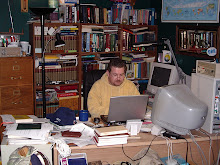
A drive-through penalty is given to a driver for speeding on pit road. At each track on the NASCAR circuit, NASCAR officials have established a pit road speed limit for the safety of drivers, pit crews and NASCAR officials. This speed limit varies from track to track and is usually between 35-55 miles per hour depending on the size of the track and several other factors.
If a driver is caught speeding on pit road and gets this penalty assessed on him, he must return to the pits during green flag conditions and travel the entire length of pit road at the proper speed limit while the rest of the cars on the track are continuing to run at full race speed. The driver is not allowed to stop in his pits for any adjustments or repairs whatsoever while he is serving this penalty. Due to the racing speed of the cars on the track and the slow speed limit of pit road, the driver will usually lose a ton of track position due to this penalty.
As stated above, the reason NASCAR established a speed limit for pit road was make it safer for drivers, crew members and officials during pit stops. Numerous accidents have occurred in the past between two or more cars due to the overzealousness of drivers trying to get an edge over everyone else. Officials and crew members who come over the wall during stops have been hit by cars in a driver's attempt to get in and out of the pits quicker than the next guy. Thus NASCAR established the pit road speed limit to reduce the risk of cars crashing into one another or hitting one of the crew members or officials who are on pit lane in front of the pit wall.
What makes obeying the speed limit so tricky for drivers is the fact that NASCAR race cars do not have speedometers. The only way drivers can judge their speed on pit road is by determining what gear they are in and reading the RPMs on the tachometer. During the pace laps, before the race begins, the pace car leads the cars around the track at pit road speed. While the cars are following the pace car, the drivers check the RPM indicated on the tachometer and also note what gear the car is in at the time. This information is then relayed by the driver to his crew chief and spotter. Then, before the drivers come to pit road during the race, the crew chief or spotter can then remind them of the proper gear position and the RPM reading they should stay under. Unfortunately, even with these precautions and reminders in place, a driver can still easily exceed the speed limit on pit road due to the "heat of the moment" and the desire to get on and off pit road as quickly as possible.
The drive-through penalty was instituted by NASCAR in 2002 and replaced other penalties then in effect that NASCAR believed to be too arbitrary and thus, unfair. Previously, if drivers were caught speeding while entering pit road, they were assessed a 15 second penalty. If it was determined that a driver was speeding while entering pit road, the crew was allowed to complete any needed work on the car and once this was complete and crew members away from the car, the NASCAR official would then hold the car in the pits for an additional 15 seconds before releasing the car to leave the pit box and exit pit road.
Before 2002, if a car was caught speeding upon exiting pit road, the driver was assessed a "stop and go" penalty. During this penalty, a driver is required to enter the pit road again under green flag conditions, and then enter his pit box once again, come to a complete stop, and then proceed to exit the pits and return to the track.
So, the drive-through penalty has now replaced both the "15 second penalty" and the "stop and go" penalty. Now, if a driver is caught speeding at any point on pit road, NASCAR imposes the drive-through as the punishment. The drive-through is certainly one penalty every driver would like to avoid. It is always hard to make up the lost track position and if this penalty comes late in the race or is followed by other problems for the driver, it can be almost impossible to make up.

No comments:
Post a Comment